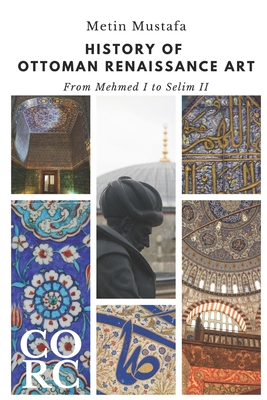You are here
Back to topHistory of Ottoman Renaissance Art: From Mehmed I to Selim II: Revised Edition (Paperback)
Email or call for price
Description
The Ottoman Renaissance, which took place during the fifteenth and sixteenth centuries in the cities of Bursa, Edirne, and Istanbul, produced an extraordinary array of artworks in the form of monumental imperial architecture, Iznik tiles, calligraphy, and illustrated manuscripts. Notwithstanding this exceptional artistic production, Ottoman art and architecture have not received the same attention in historiography as, for instance, the celebrated Italian Renaissance. Drawing upon notions of rebirth characteristic of the Renaissance, more generally, The Ottoman Renaissance seeks to situate Renaissance Ottoman art within a more global context. This book recognises the cultural interaction and sharing of values across the Mediterranean basin that characterised the period more broadly, yet examines art and architecture through specifically Ottoman conceptions of rebirth. Ottoman ideas of rebirth, although built on the classical Greece and Rome, moved well beyond these legacies. Indeed, the Ottomans were much more focused on their Eastern (Turkic, Timurid, Persian) and Islamic heritage than that of the classical world which features in the West. Both the ancient and recent past provided inspiration on which to build a cultural identity specific to the Ottoman artistic experience. In order to fully understand the shared values of the early modern Mediterranean and critically engage with the period's different interpretations of rebirth, this study compares the works of three Renaissance contemporaries: the Italian Giorgio Vasari and the Ottomans Mustafa Ali and Mimar Sinan.This study argues that the unique geographic location of the sultans of the Ottoman court allowed artists of the Ottoman Empire to capitalise on the inherited legacies of both the Islamic-Timurid-Turkic-Persian East and the Latin West. The result was a synthesis of Eastern and Western exemplars which ultimately produced a rebirth in the arts distinct from their early modern Italian and European counterparts. This work traces this Renaissance from its beginnings in 1413 through to its triumphant phase in the S leymanic Age (1520-75, including the reign of his son, Selim II). In its examination of the Empire's architecture, decorative tiles, calligraphy, and miniature paintings, the study contributes to current scholarship in the field that seeks to assess the Renaissance from a more complex, multi-focal, and multinational perspective. Furthermore, it reinforces the idea that many renaissances arose concurrently in the Mediterranean basin in the fifteenth and sixteenth centuries.

